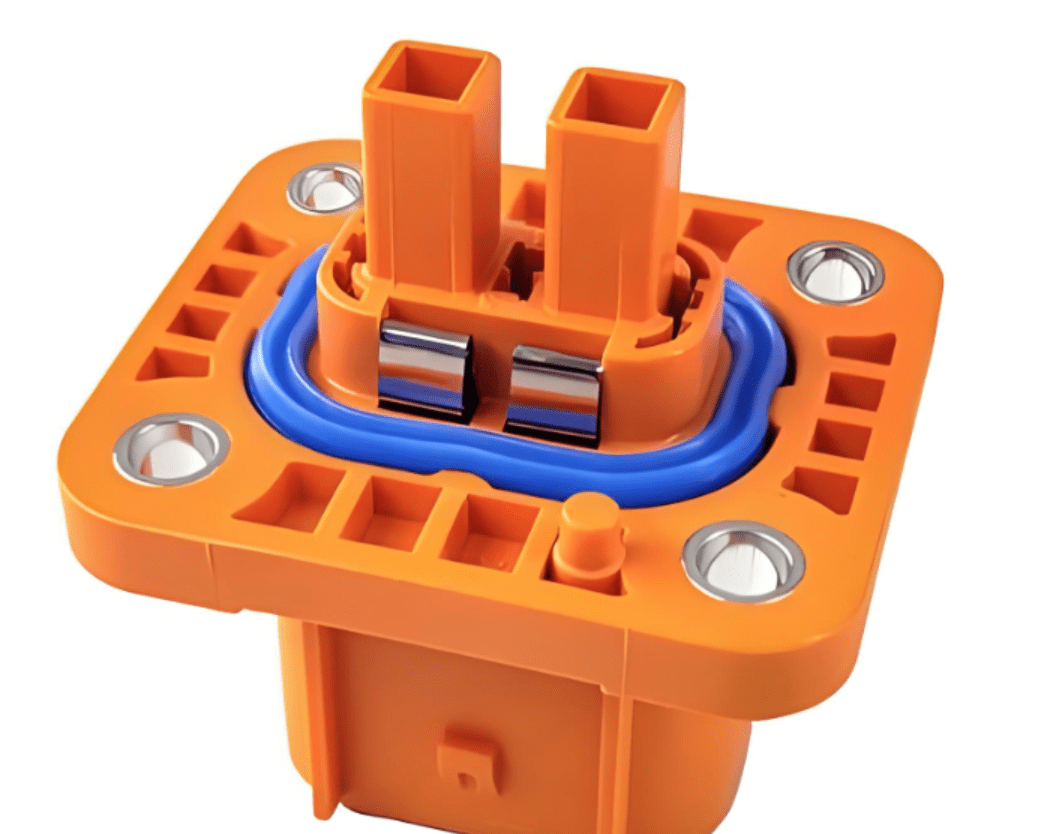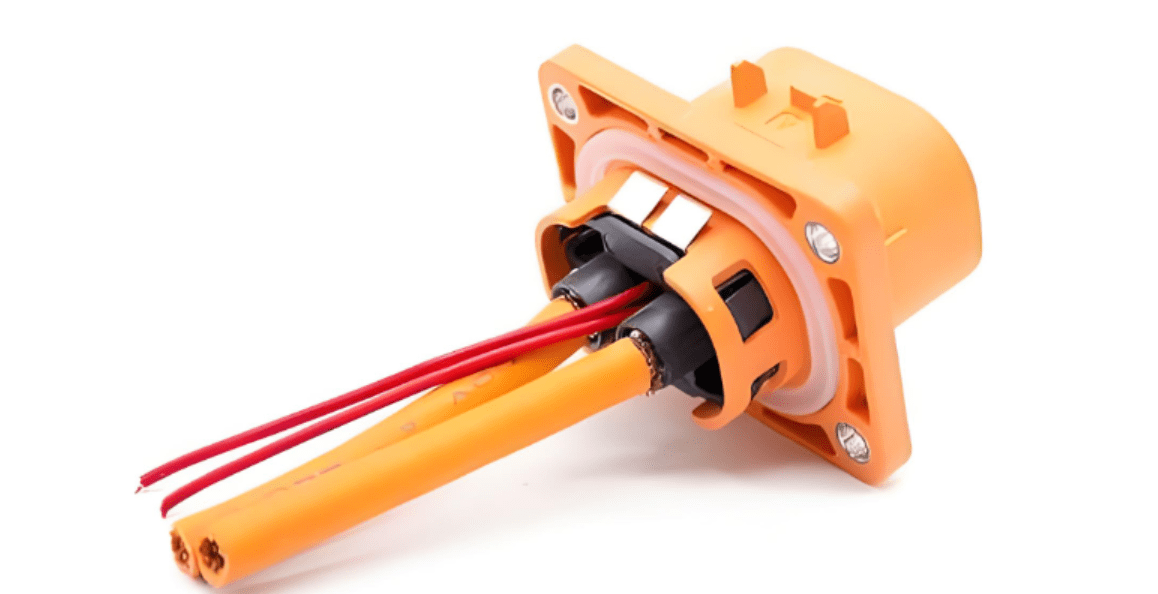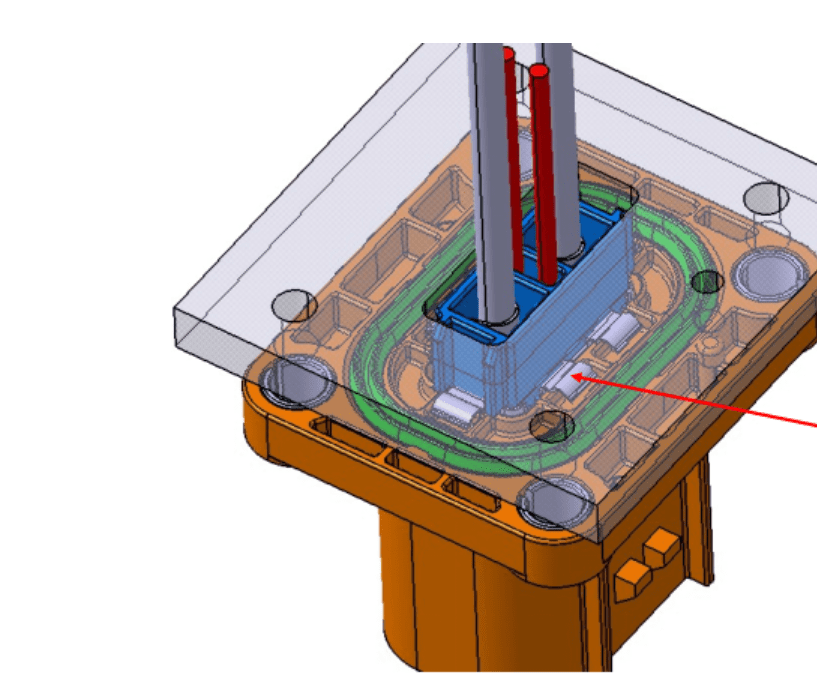


1.Project introduction:
The design structure of the high-voltage connector shielding shell is as follows: the connector is fixed to the mounting plate by bolts, and the shielding shell forms a shielding loop with the mounting plate through 6 springs;

2. Analysis of existing design cases:
Ideal situation analysis:
Under ideal conditions, good contact needs to be maintained between the bottom surface of the connector and the mounting plate to ensure shielding effect and mechanical stability. The shielding shell shrapnel plays a key role in this process, providing a force of 400~700N to ensure a tight fit between the connector and the mounting plate.
Practical installation problems:
During the actual installation process, the elastic force provided by the shielding shrapnel may be too large, resulting in the inability to fully fit between the connector sheath and the mounting plate, resulting in a gap. This gap may affect the sealing performance of the connector, especially in environments that require waterproofing and dustproofing.
Impact on sealing performance:
The presence of gaps means that dust, moisture, etc. in the environment may invade the inside of the connector, affecting the performance and life of its internal components. In the long run, this may lead to a decrease in the reliability of the connector.
Secondary installation problems:
If strong pressure is applied to the sheath during installation to align it with the mounting plate, the shielding shell shrapnel may undergo plastic deformation when the connector is removed. This deformation may cause the elasticity of the shrapnel to weaken, affecting its contact performance after secondary installation.
Shielding resistance problem:
Poor contact of the shielding shell shrapnel may cause the shielding resistance to exceed the standard, which will reduce the electromagnetic compatibility (EMC) performance of the connector, increase electromagnetic interference (EMI), and affect the stability and security of data transmission.
Improvement measures:
Re-evaluate the design of the shielding shrapnel to ensure that its elastic force does not cause excessive stress on the mounting plate and the sheath while ensuring sufficient contact force.
Consider using adaptively designed shielding shrapnel to adapt to different installation conditions and requirements.
Use softer or elastic materials to manufacture shielding shell shrapnel to reduce the risk of plastic deformation.
Design optimization may include increasing the contact area between the sheath and the mounting plate and improving the fit tolerance to improve the sealing performance.
3. Optimization plan
● Considering minor mold changes, only partially escape the sheath, as shown in the figure below, to avoid the deformation area of the spring;
● The purpose is to extend the effective length and deformation area of the spring, reduce the rebound force, reduce the deformation, and provide better contact performance.
4. Analysis of Optimization Scheme
Reduced rebound force:
The optimized scheme reduces the rebound force provided by the shield shell shrapnel to about 80N, which is significantly lower than the 400~700N of the existing design. This change helps to reduce the stress on the sheath and mounting plate during installation, thereby reducing the risk of deformation or damage to the sheath due to excessive elastic force.
Improved secondary installation performance:
Due to the reduced permanent deformation of the shrapnel, the risk of contact failure after secondary installation is significantly improved. This means that the connector can still maintain good mechanical and electrical performance after one use and removal, improving the reusability and reliability of the connector.
Improved sealing performance:
The reduced rebound force helps to achieve a tighter fit between the sheath and the mounting plate, which not only helps to improve mechanical stability, but also helps to enhance the sealing performance of the connector, thereby better protecting the internal circuit from the external environment.
Reduced plastic deformation:
The optimized shrapnel design reduces plastic deformation under strong pressure, which means that the shrapnel can still maintain its designed shape and function after multiple installation and removal, reducing maintenance costs and extending the service life of the product.
Tags :